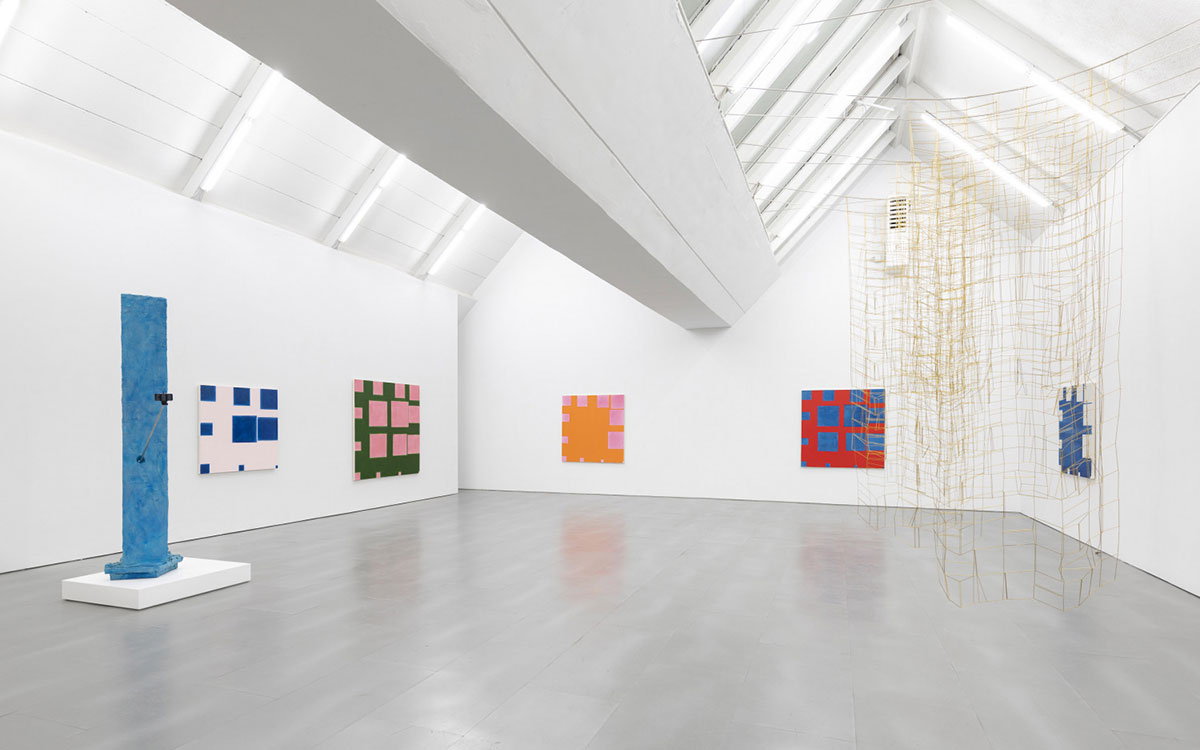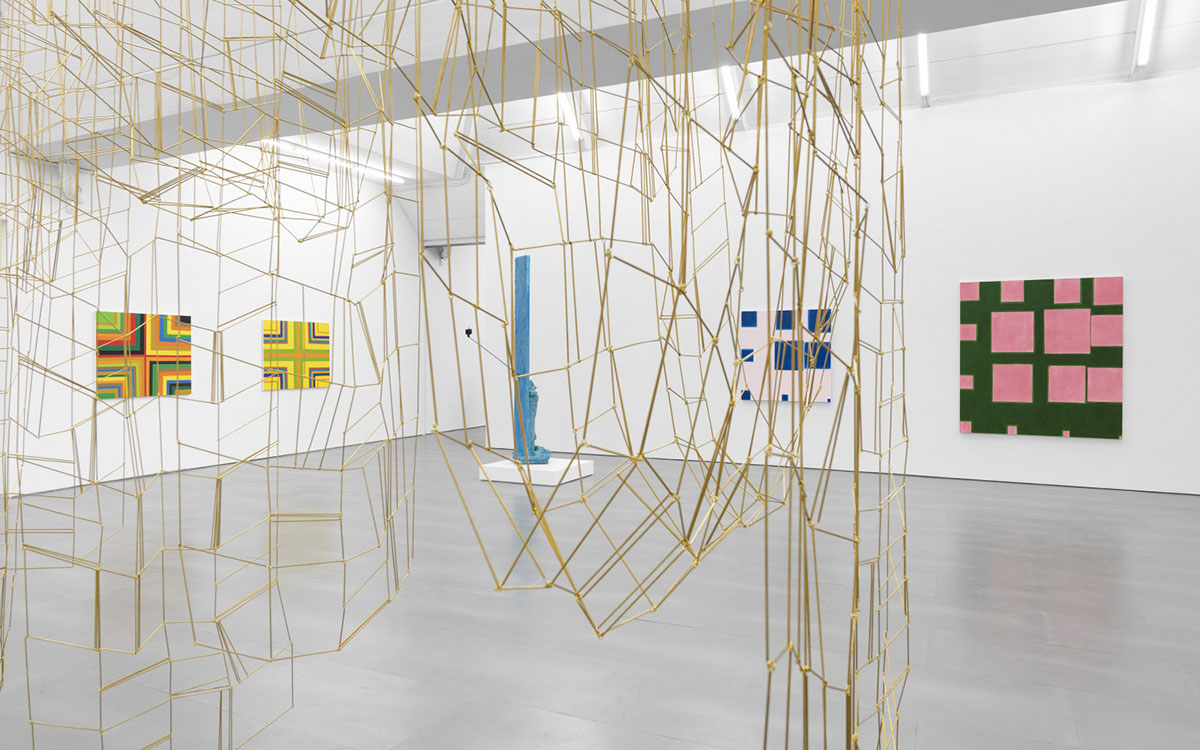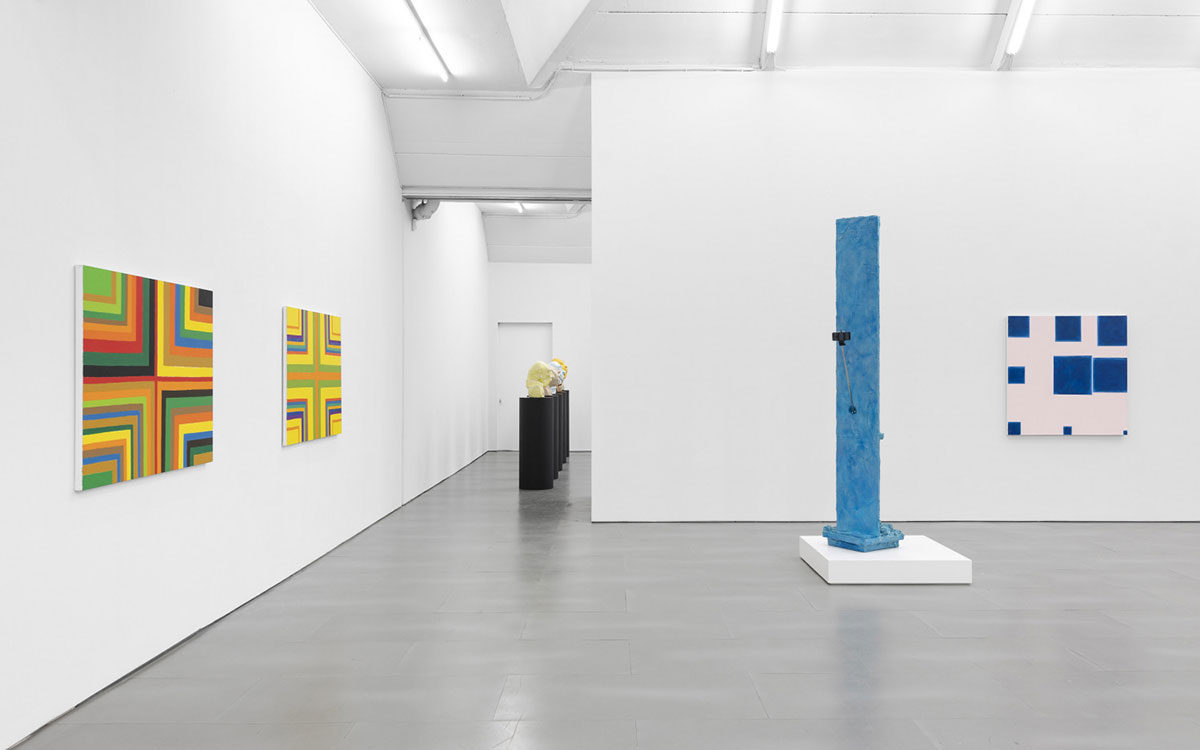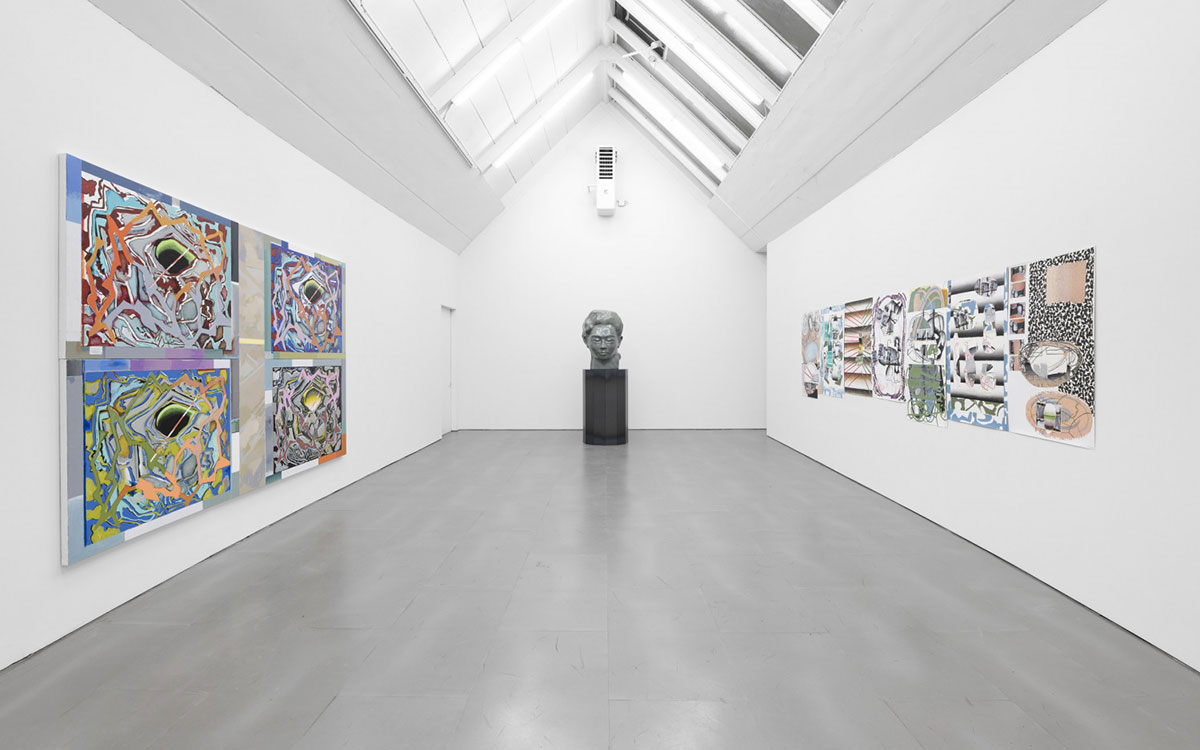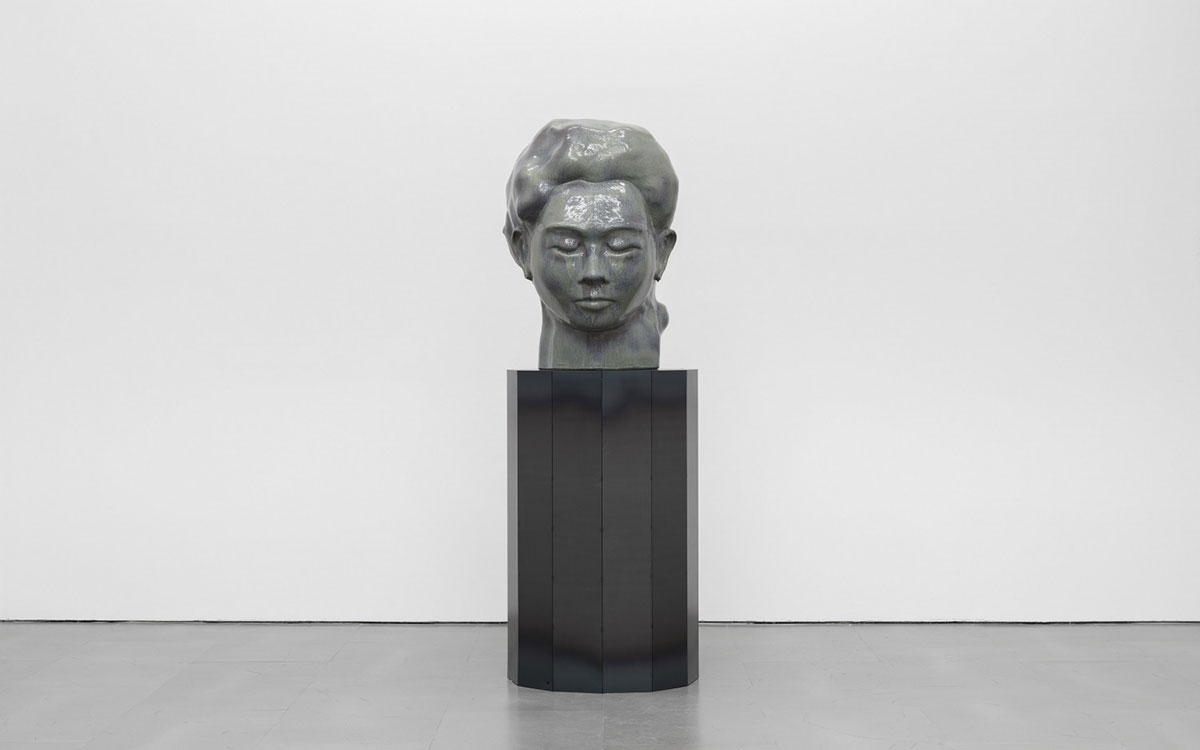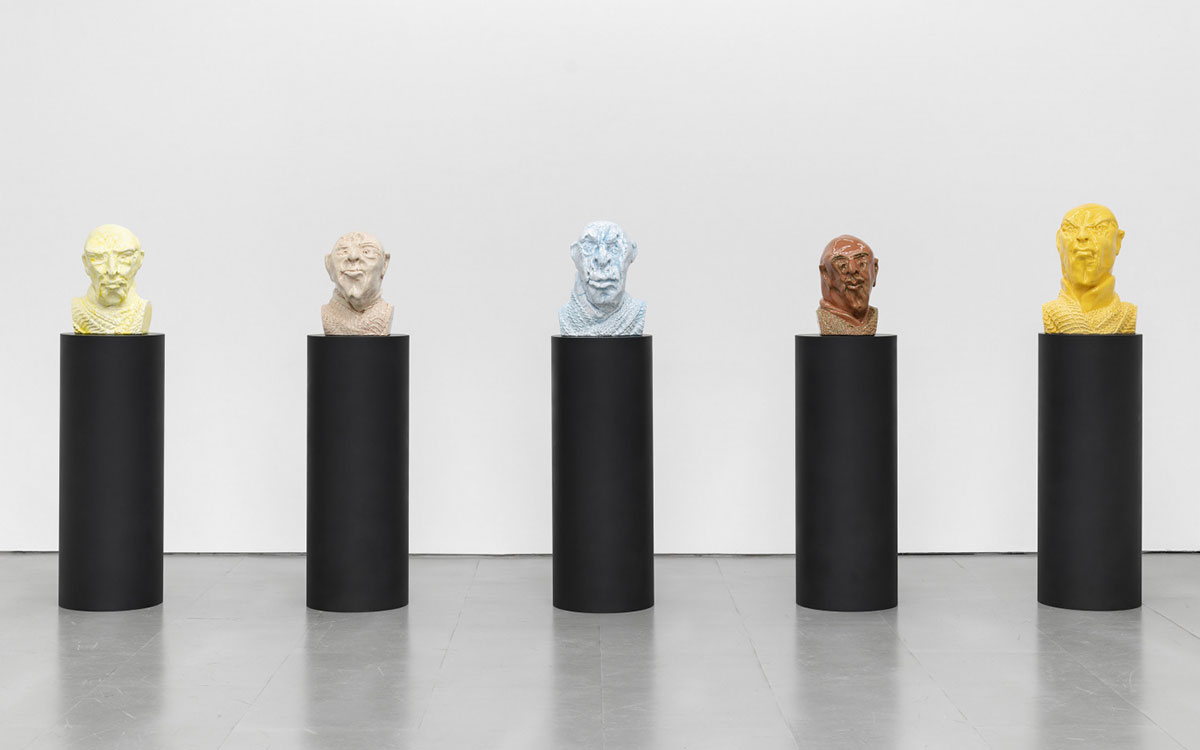PRESENTATION: 8/XXX
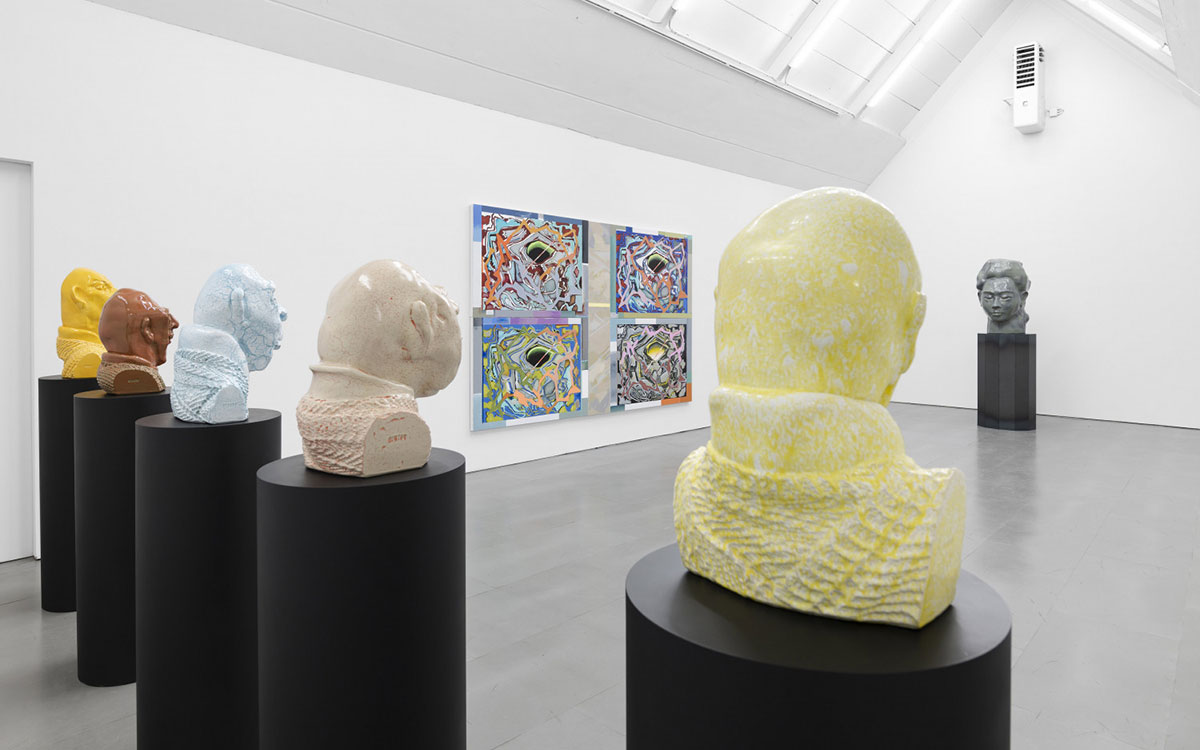 Founded in 1991 and directed by Marie-Blanche Carlier and Ulrich Gebauer the gallery promotes international contemporary art and currently represents over 30 international artists. The program veers towards aesthetic and conceptual research in the fields of sculpture, installation, film, photography, painting, and drawing.
Founded in 1991 and directed by Marie-Blanche Carlier and Ulrich Gebauer the gallery promotes international contemporary art and currently represents over 30 international artists. The program veers towards aesthetic and conceptual research in the fields of sculpture, installation, film, photography, painting, and drawing.
By Dimitris Lempesis
Photo: Carlier|gebauer Gallery Archive
How do you celebrate the 30th anniversary of a gallery in an exhibition? One could retell its story. Stories belong in books however, whereas the exhibition is a matter of the here and now of the artworks. Carlier | gebauer’s birthday exhibition “8/XXX “ is not a retrospective, not a survey, it is an improvisation without a fixed theme with works by 8 artists from different generations and with different histories. The entrance room of the gallery, a drawing room, brings together a selection of works on paper; larger groups of works follow in the main rooms. Gordillo’s painting revolves around the figure, which he takes from a wide variety of sources and breaks up and deepens in a complex program of reflections, doublings, and displacements. Mogensen and Korman, on the other hand, work on a painting that constitutes itself from its own preconditions. Mogensen replaces pictorial composition with simple progressions, which he counteracts through the arrangement of elements and choice of colors. Korman has chosen symmetrical orders for her latest cycle of paintings, she breaks up their regularity with painterly gestures. Equally form-conscious and rigorous in her engagement with sculpture Harrison stretches its formal framework by choosing heterogeneous materials that reflect the work and their ostensibly improvisational treatment. Rigurously, Antunes takes her cue from the boundaries of classical modernist sculpture and design, from which she derives formal principles and motifs for her site specific works. Rosa Barba treats film as her sculptural material and addresses its central property, the projected light. François deliberately transcends genres in his work in order to establish connections from their edges, to link meanings, and to allow contradictions to emerge. Schütte, on the other hand, works against the background of the figurative sculptural tradition with a repertoire of heads that he constantly reinterprets and transforms through their implementation into ceramics, through his choice of dimension. Engaging with the history of 20th century architecture, design, and art, Leonor Antunes reflects on the function of everyday objects and the potential of modernist forms to become sculptures. She investigates the coded values and flow of ideas embedded within objects and transforms them into reimagined abstract structures. Integrating materials such as rope, wood, leather, and brass, Antunes quietly rattles the aesthetic traces of modernism to foresee a revived way of thinking: looking forward by looking back. Borrowing from vernacular traditions of craftsmanship from South America, Mexico, and Portugal, the artists seeks to understand the construction principles behind rational designs and the process of reducing reality to a geometric abstraction. The grid, present in most of the art works, objects, and buildings she references, is transformed into brass nets, interlaced and knotted strings, leather straps, and looms of hand-woven cotton threads. She finds inspiration in the practice of female artists: their radical social and political stances and their practical improvement of everyday life through art and design. Rosa Barba’s work is a subtle interrogation and co-option of industrial cinema-as-subject via various kinds of what might be understood as “stagings”—of “the local,” the nonactor, gesture, genre, information, expertise and authority, the mundane—or removals from a social realism within which they were observed and which qualifies them as components of the work, to be framed, redesigned, represented. The effect of this contests and recasts truth and fiction, myth and reality, metaphor and material, to a disorienting degree that ultimately extends into a conceptual practice that also recasts the viewer’s own staging as an act of radical and exhilarating reversal—from being the receiver of an image (a subject of control) to being in and among its engine room(s), looking out. Michel François uses an economy of means to transform seemingly uncomplicated objects and materials, or traces of past events, into deeply resonant carriers of meaning. His sculptures can be seen as an exploration of cause and effect, and the ways in which simple gestures can change the status of an object or have important consequences. Luis Gordillo established himself as a pioneer of artistic experimentation with his unique use of figuration and color. He has a deep interest in psychoanalysis and is constantly looking for new ways of expression, utilizing photography and other image reproduction methods alongside traditional painterly techniques. Over his fifty-year career Luis Gordillo has risen to become one of Spain’s most prolific painters and one of the leading figures of abstract art in the country. Since the early 1990s, Rachel Harrison has developed a visual language at once citational and abstract, built up of three-dimensional shapes that tempt recognition but exist, in the artist’s words, as “forms that can’t be described.” Across sculpture, photography, video, and drawing, Harrison deploys strategies resonant with, yet independent of, art movements including Neo-Dada, Pop, Minimalism, and Conceptual Art. Often, Harrison effects the reshaping herself, lodging familiar images within roguish assemblages of artistic and para-artistic matter, from rope and household tools to polystyrene and cement, the latter materials often painted in vivid colors to forge her distinctive sculptural style. Harriet Korman has painted abstractly for the past four decades, continually fascinated by what can be expressed without recognizable imagery or associations. Her work engages geometry, order, and connections. The nature of the oilstick, which Korman uses with the aid of paper towels to spread the pigment into large areas, and to make the lines more substantial, aids the flexible and spontaneous process of drawing. This approach yields a wide variety of divisions, shapes, and organizations. Often finding her drawings (sometimes the ones she judges least successful) to be good subjects for paintings, she enjoys the interpolation between the two media. The differences between drawing and painting resulted in very different outcomes of the same two-dimensional exploration. Over a fifty-year career, Paul Mogensen has explored painting through mathematical progressions and classical ratios in structured arrangements of squares, rectangles and lines; through an engagement with the wall and negative space; and through color straight from the tube. Initially a student of mathematics and chemistry before he discovered art, he says, “I use arithmetic to find the form.” His works are precise with Morse-code-like sequences, unmediated by associative or narrative props, or by any sign of the artist’s hand in the paint’s application. The works are unobstructed even by the storyline of Mogensen’s own personal development, most are untitled and undated, drawing attention away from these constructs and instead towards the immediacy of the works themselves. Thomas Schütte makes evocative, often disturbing alterations to familiar forms of expression like memorial portraiture and figurative sculpture. His work explores the human condition, offering a critical perspective on social, cultural, and political issues and visually eloquent commentary on memory, loss, and the difficulty of memorializing the past.
Participating Artists: Leonor Antunes, Rosa Barba, Michel François, Luis Gordillo, Rachel Harrison, Harriet Korman, Paul Mogensen, Thomas Schütte.
Photo: Installation view: 8/XXX, Carlier | gebauer Gallery-Berlin, Courtesy Carlier | gebauer Gallery
Info: Curator: Dieter Schwarz, Carlier | gebauer Gallery, Markgrafenstraße 67, Berlin, Germany, Duration: 20/11/2021-23/2/2022, Days & Hours: Tue-Sat 11:00-18:00, www.carliergebauer.com
